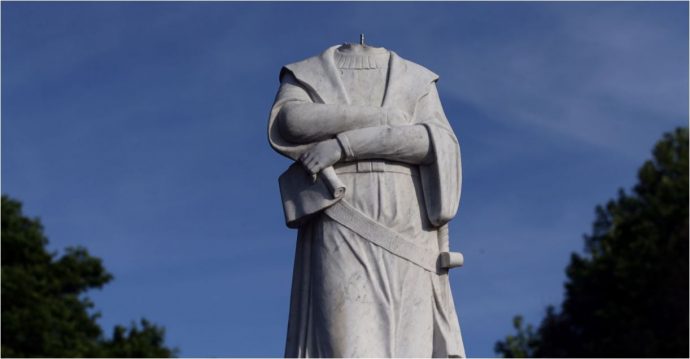By Jarrett Stepman:
Mobocracy is coming to America.
A debate over policing, race, and history has degenerated into general lawlessness, as mobs have swarmed and destroyed statues in our biggest cities from coast to coast.
And these mobs have hardly been discriminating.
They’ve targeted Christopher Columbus, Founding Fathers, Confederate generals, Union generals, abolitionists, black Civil War units, priests, and even a novelist.
Two regimes are fighting an ideological war in America today. But what side are you on? And how can you sharpen up on how to defend your position? Learn more now >>
They’ve attacked people of a multitude of creeds, races, and religions: white, black, and Hispanic; Catholic, Protestant, and Hindu.
All in the name of purging, in the words of many activists, “systematic racism,” and various other sins inherent in our country’s past, present, and future.
Unfortunately, this sort of mob justice is unlikely to bring us to a kind of post-racial utopia, a heaven on earth. More likely it will bring us straight to perdition, where free government disintegrates and we become a nation of men and mobs, not the law.
Mobs Fueled by Hatred of America
As I wrote in my book “The War on History: The Conspiracy to Rewrite America’s Past,” this slippery slope of statue toppling was a natural progression for those who believe that American and Western civilization are built on nothing but malignancy.
The movement was supercharged by the now Pulitzer Prize-winning “1619 Project,” which is finding its way into K-12 curriculum around the country.
Slavery and racism, according to the 1619 Project’s carefully constructed narrative, were at the heart of America, not liberty and the principles of 1776.
In an interesting way, the 1619 Project embraced the Confederate view of America. It constructed the argument that America is a country built on the cornerstone of slavery, rather than Abraham Lincoln or Frederick Douglass’ view that America was conceived in liberty, but existed alongside an institution deeply at odds with the basis of its creation.
Read more: The Daily Signal
Image credit: www.dailysignal.com.

